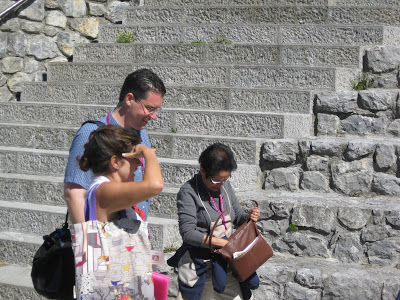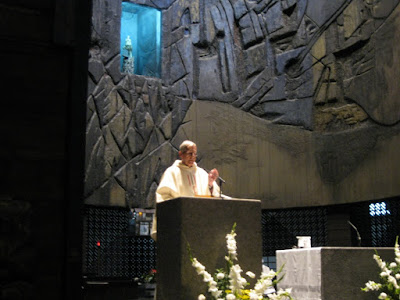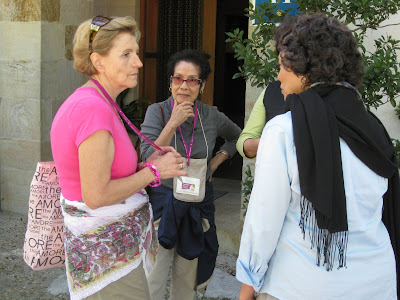






























From the beginning, the reason why I considered participating in this pilgrimage organized by Jesuits was because one of the stops on the route was Aránzazu. When I completed my Ph.D. at the University of Virginia in Spanish three years ago, I felt the urge to make a pilgrimage to Aránzazu, but the timing wasn’t right. Two days after I defended my dissertation in Charlottesville, I was on a plane to Honolulu to begin teaching immediately.
As we all now know, Aránzazu is not easily accessible. One must go out of their way to come here. The closest major city is Bilbao or San Sebastian, but even then, it is about a two-hour drive. So when I heard that Father Russell Roide from the Newman Center in Honolulu on the University of Hawaii at Manoa campus was organizing a trip to Aránzazu, I knew the time had come.
I told my parents about the pilgrimage and invited them to join me. My mother was eager to attend, but my father took a more convincing. The idea of traveling with a group of strangers wasn’t his idea of a vacation, but now that we’re here, it’s clear that once he opens up, he’s the life of the party. It’s obvious that he’s having a lot of fun and that he’s making lots of new friends.
I had been anticipating this return to Aránzazu for years. I had only been here once before, as an infant, and had no memory of the place, except for maybe the “large mountains”. Little did I know that I would be arriving on a bus full of fellow pilgrims from Hawaii and California. As I sat in the Basilica at the beginning of mass, I realized that this was one good reason why I ended up all the way in Hawaii from Virginia. In other words, I had to go all the way to Hawaii in order to be here in Aránzazu with my parents and forty new friends. Isn’t that simply amazing?
When Father Russ asked if I would like to do the reading for the mass in the Basilica, I couldn’t believe it. Could my parents ever have imagined that I would have been reading at the altar of the Basilica of Aránzazu and that they would be there to witness it? During the bus ride there from Santander, I repeated to myself – “Arantxa, don’t break down… don’t cry…” I didn’t want to blow the reading. I didn’t want to cry at the altar. And I say all this because, I cry very easily. You can ask my brothers and this experience was beyond moving because this is not just any old church.
Ricarda said, “I’ve been all over the world. I’ve visited mosques, temples and basilicas everywhere, and this place is something else.” Unlike most cathedrals, which point upwards towards the sky, the Basilica of Aránzazu is underground. You walk down a set of stairs and enter an enormous womblike space made of local stones, wood and glass. The original structure where the statue was placed burned down and in 1950 an experimental architect was hired to construct this mysterious place. The first architect, who was from Madrid, died and he was replaced by a Basque who finished the project. Besides being underground, another remarkable feature is that the virgin is so tiny in comparison to the rest of the building.
After mass, we were given the very special opportunity to go upstairs and see the statue up close. In the sacristy, which was covered in contemporary murals depicting the creation and life of Jesus, we were so close to the virgin that we could have touched her. From far away it was hard to appreciate her coloring. One of the surprising features for me was that she was blond. Father Antonio told me that the statue has never been restored. They have left her exactly how they found her, which makes it all the more impressive; in over 500 years the polychrome colors have barely faded.
There is so much more that I could write about this experience, but I’m still absorbing it all. Signing the book of all the people named Aránzazu was particularly moving. Right above my name was the signature of a child, which reconnected me to the time I had been there over thirty years ago as an infant, and which emphasized the reading that God knew me before I was born.

keep up the awesome-ness!! muah!
ReplyDelete